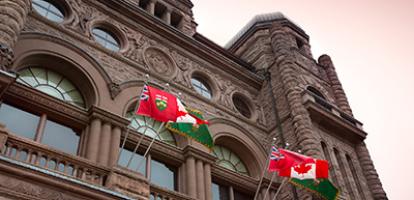As of mid-December, the World Trade Organization’s judicial arm has ceased to operate, an ominous forewarning that extends beyond the WTO itself – a sign that the global order, such as it was, is undergoing seismic shifts. The immediate issue may be at the WTO, but the root cause is the global confrontation between the United States and China, extending beyond Geneva with broad geopolitical implications.
The paralysis of the WTO’s dispute settlement system is due to Washington’s refusal to agree on appointments to the Appellate Body – either to reconfirm the appointment of members whose terms have expired or to appoint new members. That body is a vital part of the multilateral system that hears appeals of lower WTO panel decisions. Without a functioning appellate mechanism, finality in international trade disputes is no longer possible. The system grinds to a halt.
Government representatives in Geneva are working hard to find a way out of this impasse, though back home even well-informed business types don’t pay too much attention to the inner workings of the WTO, which is seen as remote from day-to-day affairs. Part of that stems from the failure of the Doha Round trade negotiations some 10 years ago, reducing the WTO to what many see as a debating gallery, with little forward movement and little impact on today’s fast-moving commercial world.
For years, the U.S. has complained that the Appellate Body has strayed far beyond its original mandate as set out in the Uruguay Round Agreement, which created the WTO in 1994. Washington says it has become unbridled and unaccountable, roaming in an activist manner all over the terms of the 1994 agreement and, in the end, giving China a pass on its treaty obligations. They say only fundamental reform can bring the system back to its originating concept. If the WTO membership won’t agree to this, the U.S. won’t agree to a Band-Aid solution either. Hence the present impasse.
There is legitimacy to many U.S. concerns. Leaving aside China, what has evolved over 25 years is an overwrought and heavily laden process, with panels and the Appellate Body reviewing national agency decisions in excruciating detail, looking at every aspect of those rulings – a kind of supra-national court of last resort. According to some, the U.S. wants to return to something akin to the old system under the General Agreement on Tariffs and Trade (GATT), where panels took a more general view and showed deference to national bodies – except in the most egregious cases where treaty obligations were infringed.
Some governments, especially in the West, agree that the system needs recalibration. There have been efforts at reform – New Zealand, Canada, the EU and others have made proposals – but the U.S. will have none of that. No attempts to paper over what the Americans see as a systemic fault requiring a complete overhaul will get the U.S. back on board.
Decision-making at the WTO functions by consensus, a kind of good faith brokerage where compromise is the essential ingredient. While that has tended to work over the long run, consensus-based decisions, in reality, require unanimity. That allows any member with a loud enough voice and a large enough economy to withhold approval and stymie decisions.
The result of the current imbroglio is that one of the world’s paramount institutions is seriously compromised. The impact has gone beyond the dispute settlement arm to infect the organization as a whole. And, as already stated, the long-term implications for other aspects of the global order are now the concern.
There are ironies running through all of this. A mainstay of Canadian trade policy is to support the multilateral system and a rules-based trading order. Any weakening of the WTO runs counter to Canadian interests. Yet there is little doubt that China has been exploiting liberalized trade under the WTO umbrella, cynically flouting its treaty obligations, especially in the areas of intellectual property, human rights, transparency and the rule of law generally. Canada has seen this firsthand, with China’s outrageous restrictions on Canadian agricultural exports, combined with the hostage-taking of two Canadians in the Meng Wanzhou extradition affair.
Even if Canadians are unsympathetic to U.S. President Donald Trump’s “America First” policies and unilateralism, only the U.S. has the leverage to force changes at the WTO. And only the U.S. has the political weight and military might to confront China and curtail – or at least discipline – that country’s aggressive hegemonic moves.
U.S. business groups have been pressing the Trump administration to work out a solution to the WTO impasse. But even if some solution is found for the Appellate Body, the fact remains that the U.S. and China will be in geopolitical combat for years, far beyond the WTO itself – and long after the Trump presidency. It seems clear whose side Canada has to be on.
Published in the Globe and Mail
Lawrence Herman, a former Canadian diplomat, is counsel at Herman & Associates and senior fellow of the C.D. Howe Institute in Toronto.





